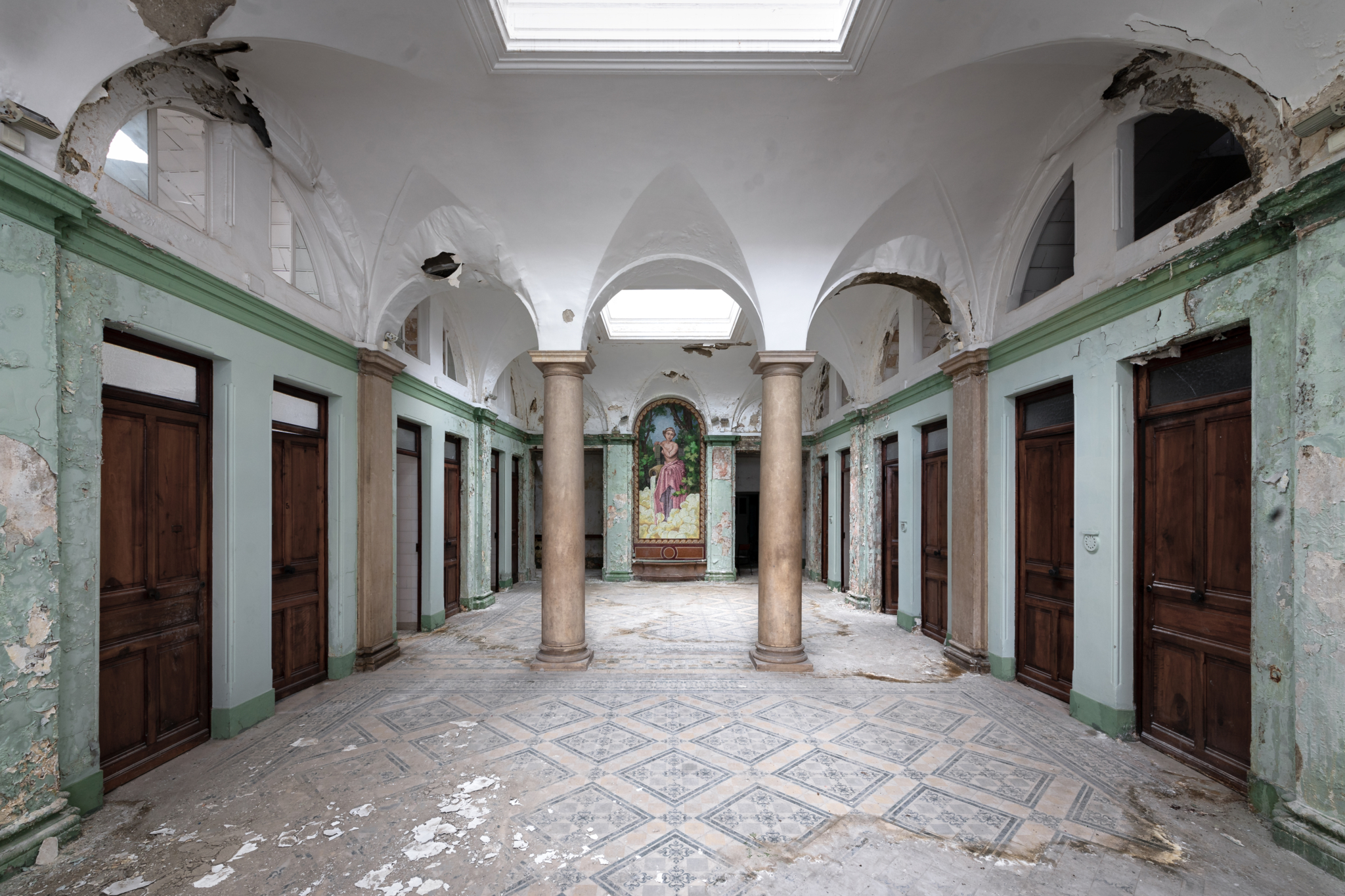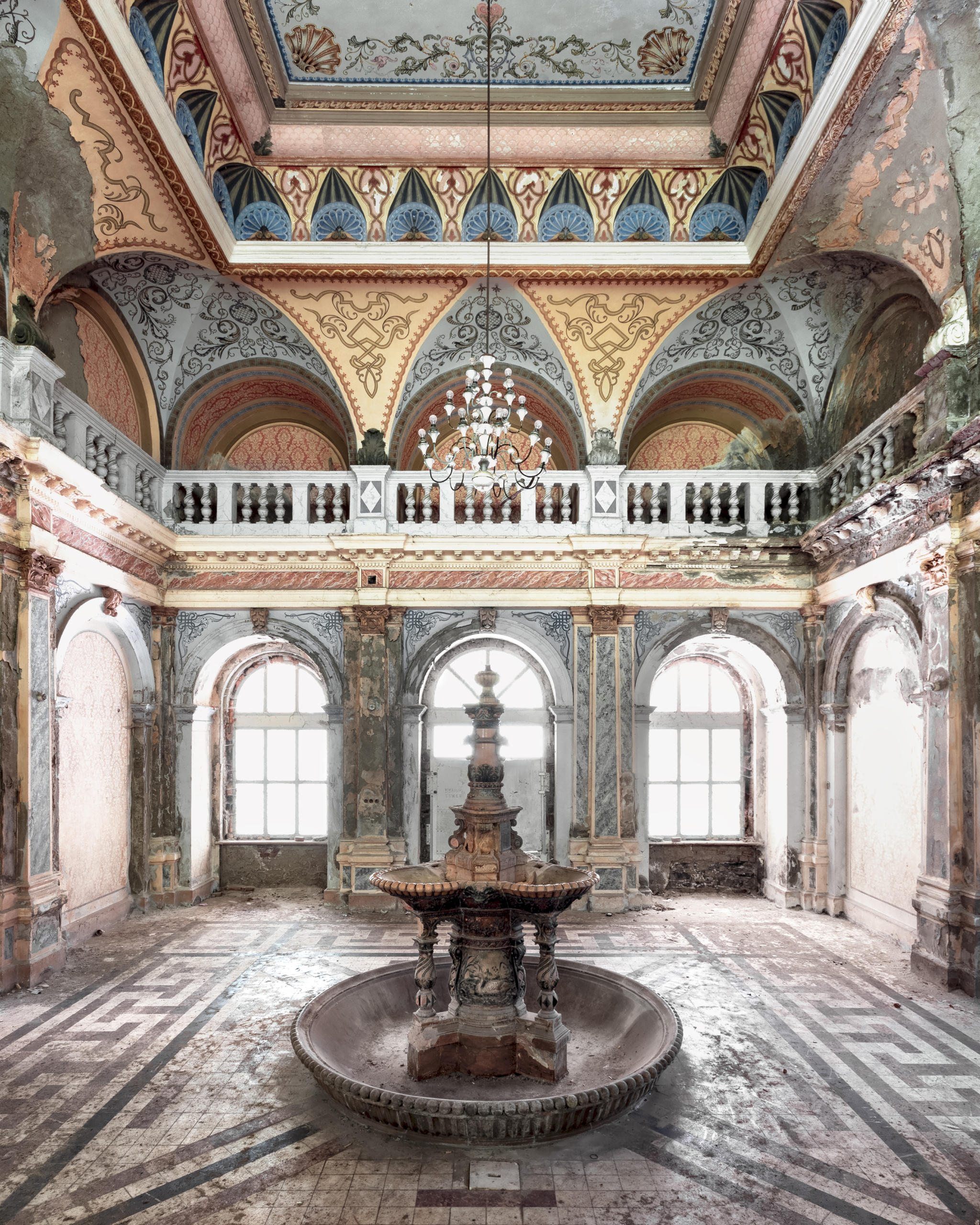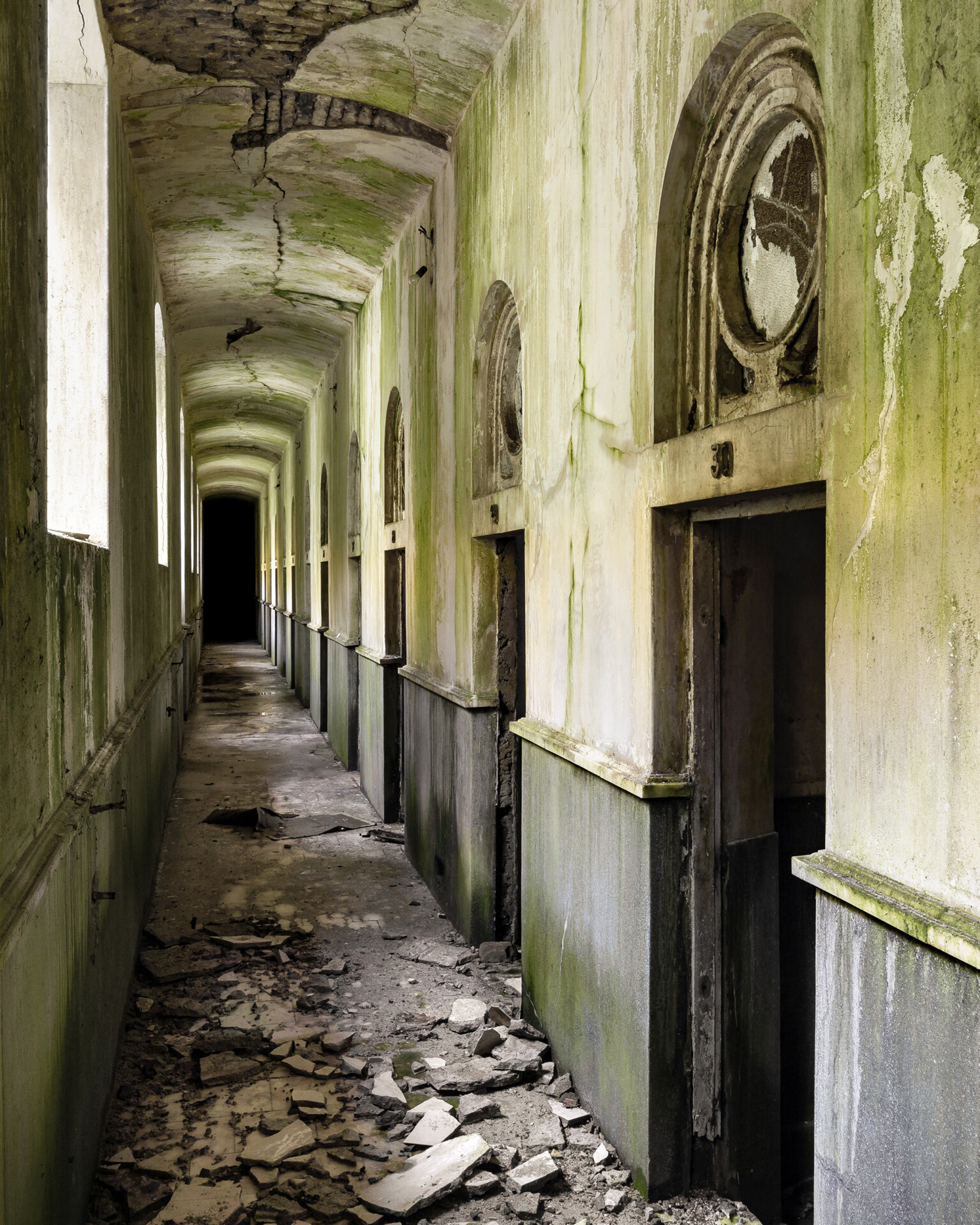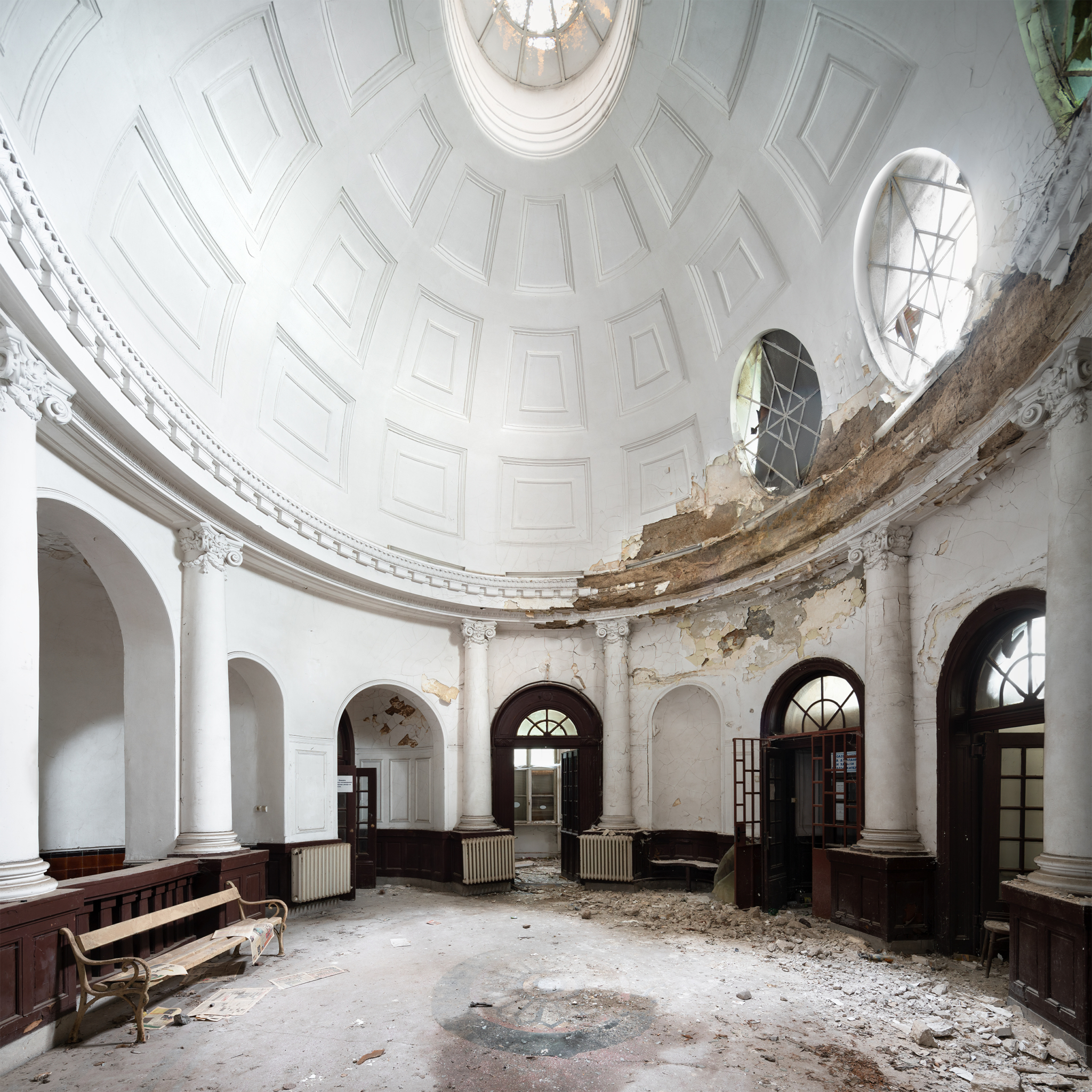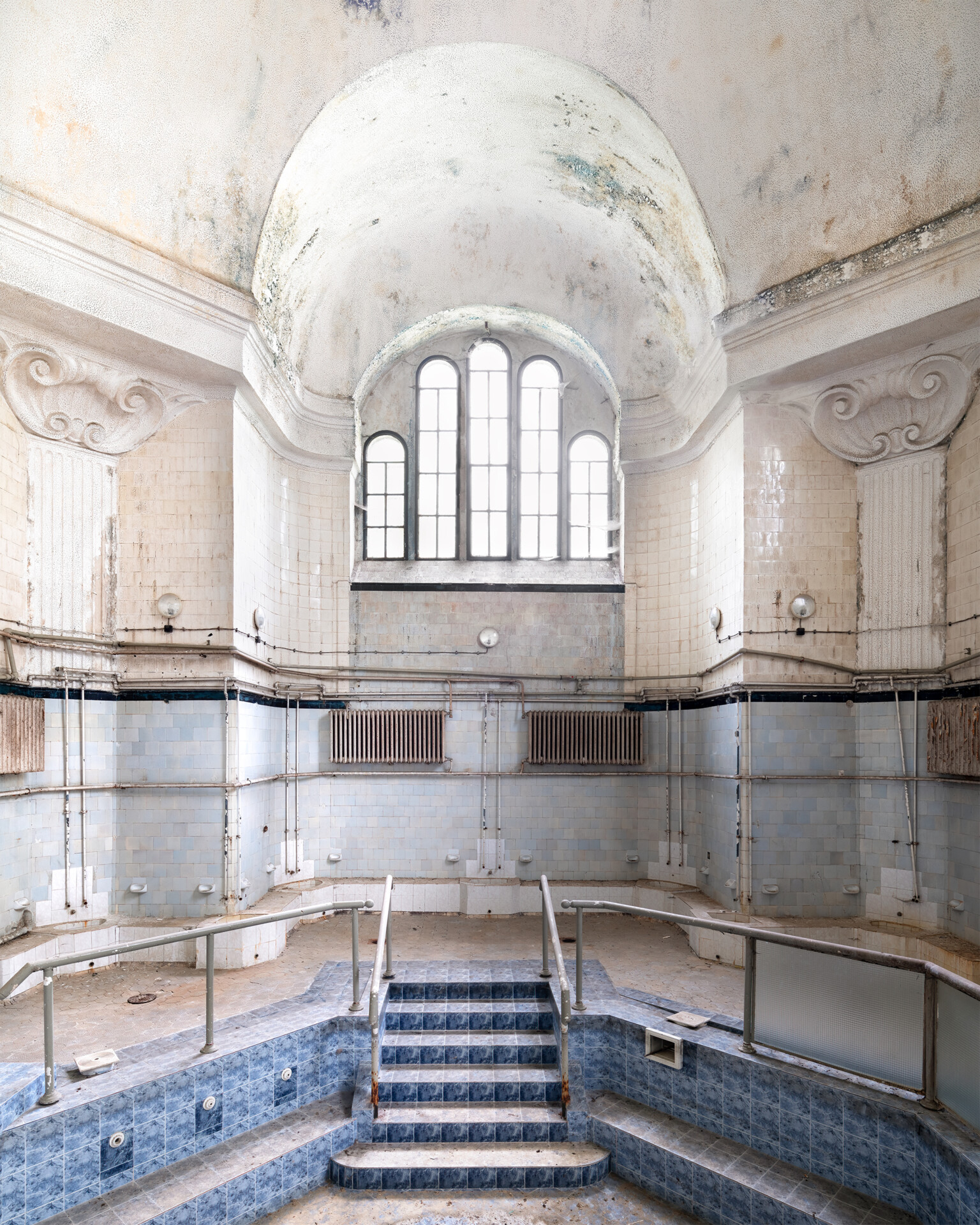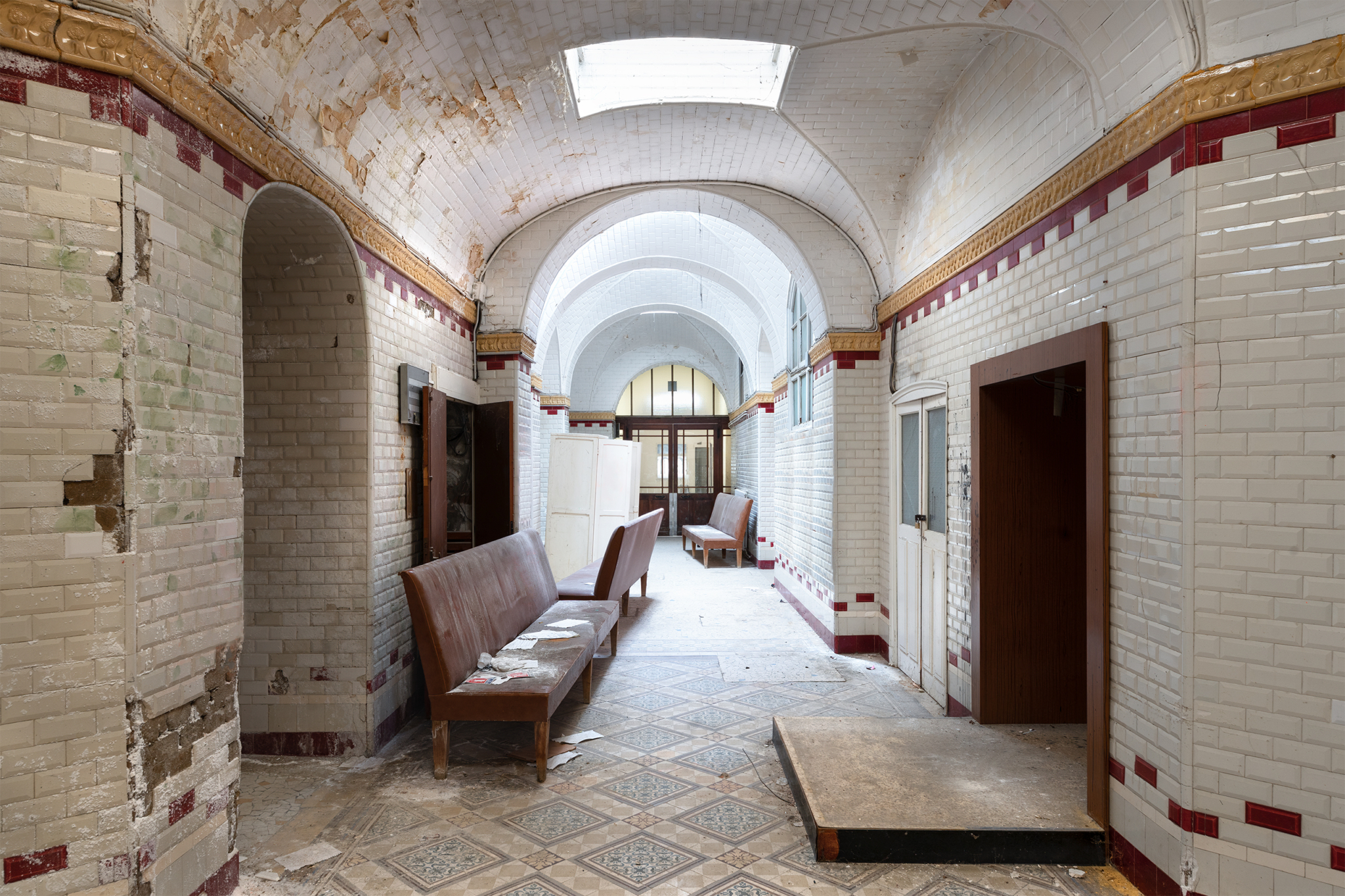preface
The heyday of thermalism is also called the belle époque or the roaring twenties. An era that is over, but which haunts us constantly as we go through these jewels of yesteryear. Like lost souls, we sail through these wrecked carcasses. The only difference being the goal. Goal being very clear in our case. To witness involuntary time capsules and immortalize them.
Spa resorts had their golden era from 1875 to 1915. Kings, emperors and other aristocratic visitors were the first to popularize the tradition of “taking the waters” which became almost an art form. During this era, the aristocracy and the bourgeoisie would flock to the spa towns. On the pretext of maintaining their health, this clientele was in fact mainly in search of hedonism, idleness and frivolity.
This transformation also answered to changes in the Enlightenment’s vision of cure through water, which included 3 obligations: drinking mineral water, practicing a physical activity and enjoying oneself. According to Dr Authier Duvernois in his work “Patrimoine et traditions du thermalisme”, spa towns became "safety valves" : another world, an escape from everyday life, where all sorts of transgressions were possible.
Spa towns entered the 20th century in their full splendor. It’s under the influence of Napoleon III that the old resorts were enlarged and new ones were built. Prestigious and romantic establishments, with complex architectural programs and richly decorated interiors, were built throughout the territory. This dynamic continued until around 1930. By that time, the benefits of waters had been fully recognized and the construction of railway lines, providing faster and more comfortable journeys, made it much easier for visitors to reach spa towns
The Iron Route would be a turning point for European spa towns, especially in France, where it encouraged the flourishing of new healing sites, all equipped with their own railway station and tour packages. Train travels also made visiting the spas more affordable for middle classes and spa towns largely increased their visitors.
Modern tourism had already begun and the decrepitude of the old structures which no longer met the current standards was beginning. The image of thermalism is losing its prestige.
This series is our testimony of a decomposed thermal past.




